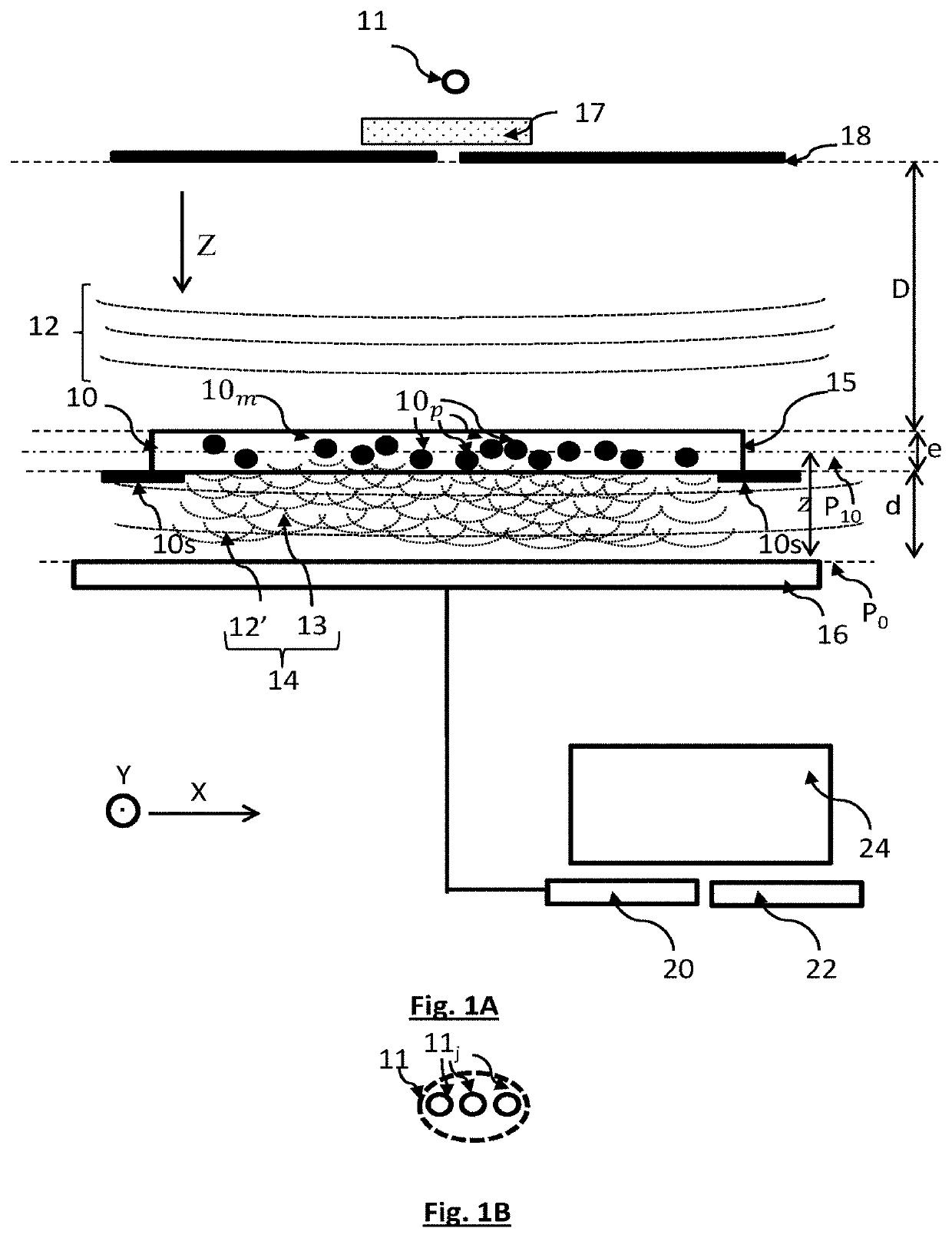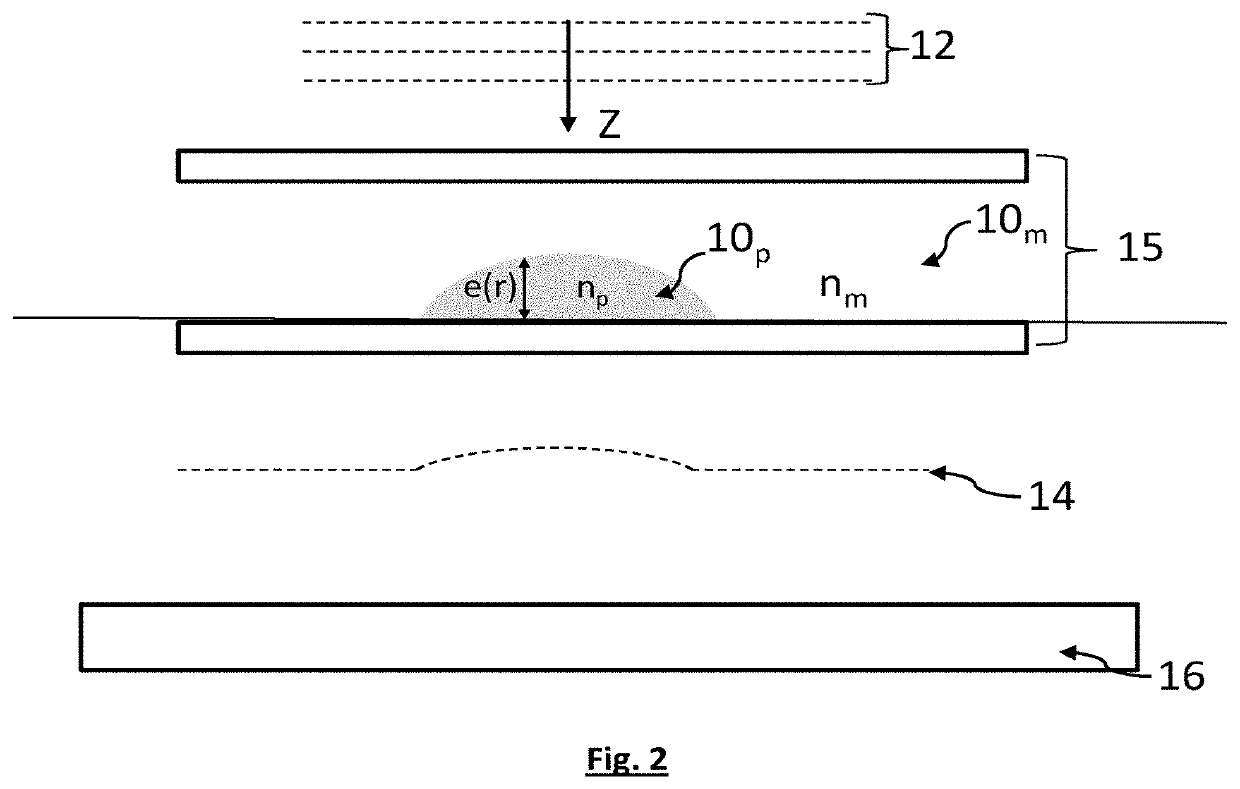Method for observing a sample
a sample and observing technology, applied in the field of sample observation, can solve the problem that algorithms may induce reconstruction noise in the reconstructed imag
- Summary
- Abstract
- Description
- Claims
- Application Information
AI Technical Summary
Benefits of technology
Problems solved by technology
Method used
Image
Examples
example
[0136]An example has been carried out using a sample containing cells of A549 type placed in a sample containing a liquid culture medium, at a distance of 1400 μm from a CMOS image sensor: size of the pixels: 1.67 μm×1.67 μm-10 million pixels. The light source comprised 3 light-emitting diodes that emitted in the red, green and blue, respectively. The light source was placed at a distance of 50 mm from the sample. It was coupled to a diaphragm defining a diameter aperture of 50 μm.
[0137]FIGS. 4A, 4B and 4C shows the images acquired in the red, green and blue spectral bands, respectively.
[0138]FIG. 4D shows an image of the gradient Gwn(r) of the validity indicator established for each pixel r, as a function of the parameter L(r) in the first iteration (n=1). In this example, the validity indicator is such that:
ϵ|ℱnn=ϵ0|ℱnn+γϵ10|ℱnn(24)withϵ0|ℱnn=4NrNλ∫dr∑λ(M^0λ,n-M0λ)2and(25)ϵ10|ℱnn=∫dr(∂Ln(r)∂x)2+(∂Ln(r)∂y)2+(Ln(r))2(26)
[0139]FIG. 4E shows a spatial distribution of the optical thic...
PUM
| Property | Measurement | Unit |
|---|---|---|
| diameter | aaaaa | aaaaa |
| diameter | aaaaa | aaaaa |
| diameter | aaaaa | aaaaa |
Abstract
Description
Claims
Application Information
 Login to View More
Login to View More - R&D
- Intellectual Property
- Life Sciences
- Materials
- Tech Scout
- Unparalleled Data Quality
- Higher Quality Content
- 60% Fewer Hallucinations
Browse by: Latest US Patents, China's latest patents, Technical Efficacy Thesaurus, Application Domain, Technology Topic, Popular Technical Reports.
© 2025 PatSnap. All rights reserved.Legal|Privacy policy|Modern Slavery Act Transparency Statement|Sitemap|About US| Contact US: help@patsnap.com



